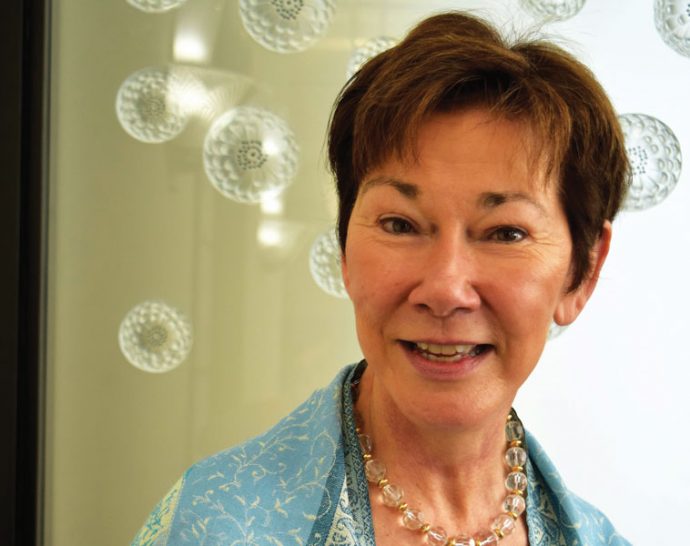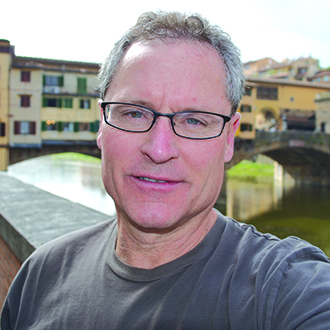So, what do you do if you’ve reached the pinnacle in your chosen field? Many folks would sit back, relax, reflect and enjoy the fruits of their labors. In the wine world, major producers will often look elsewhere in the world for opportunity and expansion. Opus One wine, recognized as one of the great wines in the world, is a collaboration between Château Lafite Rothschild and Robert Mondavi of California. The Marnier Lapostolle family, makers of Grand Marnier liqueur, bought up property in Chile and started Lapostolle Wines, where at the time land and labor were inexpensive. Lafite Rothschild also has partnerships/ownerships with producers in Argentina (Catena) and Chile (Los Vascos). Money is infused into a respectable winery or region, the winery’s infrastructure is improved, the winemaking style or grapes used may be tweaked and suddenly a wine appears with impressive reviews with an instant cult following.
In the Champagne region, as in most recognized wine regions, the land for planting grapes is expensive and finite. When you’ve maxed out your land holdings and still feel the need for expansion, you must look elsewhere. The Taittinger family of France has been making beautiful Champagne for centuries. They bought up a chateau with vineyards in the Loire Valley and then looked to America for the next move. Of course the 1970s brought a revolution in the wine world when upstart California was accepted as a high-quality winemaking region. In 1976, wine merchant Steven Spurrier put together a blind tasting competition of noteworthy French producers from Bordeaux and Burgundy against essentially unknown California producers. Documenting this event was Time magazine’s George Taber, whose book, “Judgment of Paris,” should be required reading for anyone who ever drinks a glass of wine.
Claude Taittinger’s search focused on Napa Valley where he bought 138 acres in Carneros in 1987. Winemaker Eileen Crane, who began her wine career with Chandon and then Gloria Ferrer Caves & Vineyards, not only by making sparkling wines in the traditional (Champagne) method but also overseeing design and construction of the Gloria Ferrer facility. Taittinger hired her to help plan and develop Domaine Carneros, from vineyard to winery to château. Today, Crane is today the most experienced sparkling-wine maker in the United States, with some 40 years in the industry, and Domaine Carneros is comprised of six estate vineyards totaling 400 acres in the Carneros AVA, between Napa and Sonoma. Going green is a key to Domaine Carneros. It has farmed sustainably since the late ’80s and has embraced and installed a massive solar capturing facility on the roof of the winery.
I had the wonderful opportunity to meet and dine with Crane this past week at the Lalique showroom in Manhattan. We tasted six vintages of her signature sparkling wine, Le Rêve, which means “the dream” in French. Domaine Carneros makes around a half-million bottles of Le Rêve a year. We began with the most recent, her 2011, followed by the ’05, ’04, ’98, ’92 and the ’88, technically not Le Rêve because it predated the name, but from the same line and concept. Each of these wines is delicious and easy drinking. The 2011, 100 percent Chardonnay, was fresh and lively, with generous lemony, citrus notes and a lasting finish. “Our wines have a great body and a great finish,” she said. “We aim for a pleasant and creamy sensation to create a lasting mouth feel.”
The ’05 had a very light oakiness, micro bubbles and lemon and pear notes with that classic lasting finish. The ’04 tasted quite young with fresh citrus fruit and a lovely integrated new oak. The ’04 was a cool climate year in Carneros, which is perfect for long hang time in the vineyard that will contribute complexity to the resultant wine.
Our next wine, the ’98, showed citrus, honey and a light toastiness that contributed to a beautifully long finish. The ’92 was fresh and young like the ’04, with peach, honey and a soft yeastiness. The 1988 was the outlier of the group. This sparkler, at 80 percent Chardonnay and 20 percent Pinot Blanc showed a slight oxidation you might find with an older wine. It had soft micro bubbles with caramel and tropical fruit. Several people in the room liked this wine best because it was so unique.
There are two takeaways from Crane here. These wines are great and maybe there should be a new “Judgment of Paris” in which the Champagnes of France are blind tasted against the sparkling wines of California, notably Domaine Carneros. I hear this from many producers of bubbly when their wine is only used as a celebratory pop. Crane is confident of the outcome:
“Our bubbles will pair with any food, any experience, any time of day. Make bubbly a regular part of your wine world. Choose virtually any food. And choose our sparkling wine. Perfect.”
Write me at doug@dougpaulding.com.


